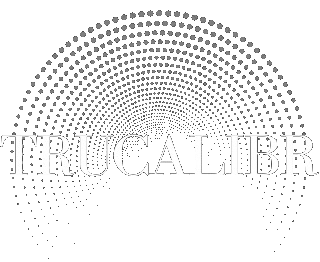It’s essential to keep our minds sharp and actively engaged. Cognitive stimulation, the process of engaging in activities that challenge and exercise our mental abilities, has emerged as a powerful tool for promoting brain health, enhancing cognitive function, and potentially reducing the risk of cognitive decline.
From puzzles and games to lifelong learning and social engagement, cognitive stimulation encompasses a wide range of activities designed to stimulate our brains and foster neuroplasticity – the brain’s ability to adapt and reorganize neural pathways in response to new experiences and challenges.
Statistics:
- According to the Alzheimer’s Association, engaging in cognitively stimulating activities can help delay or slow the onset of age-related cognitive decline.
- Research published in the Journal of Neurology, Neurosurgery, and Psychiatry found that individuals who engage in regular cognitive stimulation have a 47% lower risk of developing dementia compared to those who do not.
- A study by the University of Michigan found that older adults who participated in cognitive stimulation activities experienced improvements in memory, processing speed, and problem-solving abilities.
Table of Contents
In-depth Exploration of Each Key Point
Understanding Cognitive Stimulation
Cognitive stimulation refers to the process of engaging in activities that challenge and exercise various aspects of cognitive function, such as memory, attention, problem-solving, and reasoning. These activities are designed to activate and stimulate specific areas of the brain, promoting neuroplasticity and potentially enhancing cognitive abilities.
Unlike physical exercise, which targets the body’s muscle groups and cardiovascular system, cognitive stimulation focuses on exercising the mind. It involves exposing the brain to novel experiences, complex tasks, and intellectually stimulating environments, which can help create new neural connections and strengthen existing ones.
Cognitive stimulation can be achieved through a wide range of activities, including puzzles, brain games, learning new skills, engaging in mentally challenging hobbies, and participating in social and educational activities. The key is to consistently challenge the brain in ways that are enjoyable and meaningful to the individual.
The Benefits of Cognitive Stimulation
Engaging in regular cognitive stimulation has been linked to numerous benefits for brain health and cognitive function. Here are some of the key advantages:
- Improved Memory and Cognitive Function: Cognitive stimulation activities can enhance various aspects of cognitive function, including memory, attention, processing speed, and problem-solving abilities.
- Reduced Risk of Cognitive Decline: Regular cognitive stimulation has been associated with a lower risk of age-related cognitive decline and dementia, as it helps promote brain plasticity and preserve cognitive reserve.
- Enhanced Mental Well-being: Engaging in mentally stimulating activities can provide a sense of accomplishment, boost self-confidence, and promote overall mental well-being.
- Increased Social Engagement: Many cognitive stimulation activities involve social interaction, which can help foster social connections and reduce the risk of social isolation and loneliness.
- Lifelong Learning and Personal Growth: Cognitive stimulation encourages continuous learning and personal growth, which can contribute to a more fulfilling and enriched life.
Types of Cognitive Stimulation Activities
Cognitive stimulation can take many forms, catering to diverse interests and preferences. Here are some examples of cognitive stimulation activities:
- Puzzles and Brain Games: Crossword puzzles, sudoku, jigsaw puzzles, logic games, and brain teasers challenge various cognitive abilities, including memory, problem-solving, and spatial reasoning.
- Learning a New Skill: Acquiring a new skill, such as playing a musical instrument, learning a new language, or taking up a hobby like photography or painting, engages multiple areas of the brain and promotes neuroplasticity.
- Reading and Writing: Engaging in reading activities, writing stories or journaling, and participating in book clubs or writing groups can stimulate language, comprehension, and analytical thinking.
- Social and Educational Activities: Attending lectures, joining discussion groups, participating in community events, or taking adult education classes can provide cognitive stimulation while fostering social connections.
- Physical Activities with Cognitive Engagement: Activities that combine physical and cognitive elements, such as dance classes, martial arts, or sports that require strategic thinking, can provide a comprehensive brain workout.
Cognitive Stimulation and Aging
As we age, our cognitive abilities can naturally decline, making cognitive stimulation even more crucial for maintaining brain health and function. Research has shown that engaging in mentally stimulating activities throughout adulthood can help delay or slow the progression of age-related cognitive decline and potentially reduce the risk of dementia.
For older adults, cognitive stimulation programs and activities can be tailored to address specific cognitive domains, such as memory, attention, and executive function. These programs often incorporate a variety of activities, including puzzles, memory games, problem-solving exercises, and group discussions.
Additionally, social engagement and participation in community activities can provide cognitive stimulation while combating social isolation and loneliness, which are risk factors for cognitive decline in older adults.
</“`html section>
Cognitive Stimulation for Children and Youth
Cognitive stimulation is not only beneficial for older adults but also plays a crucial role in the cognitive development of children and adolescents. Engaging in mentally stimulating activities from an early age can help build a strong foundation for cognitive abilities and promote healthy brain development.
For children, cognitive stimulation can take various forms, including educational games, puzzles, reading activities, and hands-on learning experiences. These activities can help develop skills such as problem-solving, critical thinking, memory retention, and language acquisition.
In addition to traditional educational activities, exposure to diverse environments and experiences can also provide cognitive stimulation for children. Activities like exploring nature, engaging in imaginative play, and participating in sports or extracurricular activities can promote cognitive development while fostering creativity and social skills.
For adolescents and young adults, cognitive stimulation can come from pursuing intellectually challenging hobbies, participating in academic competitions or clubs, or engaging in creative pursuits like writing, coding, or artistic endeavors.
Incorporating Cognitive Stimulation into Daily Life
While structured cognitive stimulation programs and activities can be beneficial, it’s also essential to incorporate cognitive stimulation into our daily routines and habits. Here are some practical tips for integrating cognitive stimulation into your lifestyle:
- Embrace Novelty: Seek out new experiences, learn new skills, or try out different hobbies. Novel experiences challenge the brain and promote neuroplasticity.
- Mix Up Your Routine: Vary your daily routines and activities to prevent cognitive stagnation. Take different routes to work, try new recipes, or engage in different forms of exercise.
- Challenge Yourself: Engage in activities that require sustained mental effort and challenge your cognitive abilities, such as learning a new language, playing brain games, or tackling complex projects.
- Foster Social Connections: Participate in social activities, join clubs or discussion groups, or engage in intellectually stimulating conversations with others. Social interaction can provide cognitive stimulation and enhance overall well-being.
- Promote Lifelong Learning: Continuously seek opportunities for learning and personal growth. Take classes, attend lectures or workshops, or engage in self-study on topics that interest you.
By making cognitive stimulation a regular part of your daily life, you can promote brain health, enhance cognitive function, and potentially reduce the risk of cognitive decline.

Additional Resources and Further Reading
For those interested in exploring cognitive stimulation further, the following resources are recommended:
- “The Brain That Changes Itself” by Norman Doidge
- “Keep Your Brain Alive” by Lawrence C. Katz and Manning Rubin
- “The Alzheimer’s Solution” by Dean Sherzai and Ayesha Sherzai
- “Brain Games” website (https://www.braingames.com/)
Frequently Asked Questions
Q: Is it ever too late to start cognitive stimulation?
A: It’s never too late to start incorporating cognitive stimulation into your life. While the benefits of cognitive stimulation may be more pronounced when started earlier in life, research suggests that engaging in mentally stimulating activities can be beneficial at any age, including for older adults.
Q: Can cognitive stimulation prevent or cure dementia?
A: While cognitive stimulation has been associated with a reduced risk of cognitive decline and dementia, it is not considered a cure or a guaranteed prevention measure. However, by promoting brain health and cognitive reserve, cognitive stimulation can potentially delay the onset or slow the progression of dementia-related symptoms.
Practical Tips and Actionable Advice
Developing a Cognitive Stimulation Routine
To maximize the benefits of cognitive stimulation, it’s essential to incorporate it into your daily or weekly routine. Here are some practical tips for developing a sustainable cognitive stimulation routine:
- Identify Your Interests and Preferences: Choose cognitive stimulation activities that align with your interests and preferences. This will make the activities more enjoyable and increase your motivation to engage with them regularly.
- Set Realistic Goals: Establish achievable goals for cognitive stimulation, such as completing a certain number of puzzles per week, learning a new skill within a specific timeframe, or attending a weekly educational or social event.
- Create a Schedule: Dedicate specific times or days for cognitive stimulation activities. This can help establish a routine and make it easier to prioritize these activities amidst other commitments.
- Vary Your Activities: Incorporate a variety of cognitive stimulation activities to target different cognitive domains and prevent boredom or stagnation. Mix puzzles, reading, social activities, and new skill acquisition for a well-rounded cognitive workout.
- Track Your Progress: Consider keeping a log or journal to track your progress and accomplishments with cognitive stimulation activities. This can provide a sense of accomplishment and motivation to continue challenging yourself.
Engaging in Cognitive Stimulation with Others
While cognitive stimulation can be pursued individually, engaging in these activities with others can provide additional benefits. Here are some suggestions for incorporating social elements into your cognitive stimulation routine:
- Join a Book Club or Discussion Group: Participating in a book club or discussion group can combine cognitive stimulation with social interaction and the exchange of ideas and perspectives.
- Attend Educational or Cultural Events: Attend lectures, workshops, or cultural events with friends or family members. Discussing and reflecting on the content afterwards can further enhance cognitive stimulation.
- Organize Game Nights: Host regular game nights with friends or family members, incorporating board games, card games, or puzzles that challenge cognitive abilities while fostering social connections.
- Take a Class or Learn a New Skill Together: Enroll in a class or workshop with a friend or family member to learn a new skill together. The shared experience can provide motivation and support while promoting cognitive stimulation.
- Participate in Community Volunteering: Volunteering in your community can combine cognitive stimulation with social engagement and a sense of purpose, benefiting both your mental and emotional well-being.
Conclusion
Cognitive stimulation is a powerful tool for promoting brain health, enhancing cognitive function, and potentially reducing the risk of age-related cognitive decline. By engaging in activities that challenge and exercise our mental abilities, we can unlock the full potential of our minds and foster a lifelong journey of learning, growth, and personal fulfillment.
From puzzles and brain games to learning new skills and engaging in social activities, the opportunities for cognitive stimulation are vast and diverse. By incorporating these activities into our daily routines and making cognitive stimulation a priority, we can cultivate a mindset of continuous learning and intellectual curiosity.
Remember, cognitive stimulation is not just beneficial for older adults – it is a valuable practice for individuals of all ages, from children to adults. By embracing cognitive stimulation as a lifelong pursuit, we can nurture our cognitive abilities, promote mental well-being, and potentially reduce the risk of cognitive decline as we age.
Embrace the power of cognitive stimulation and embark on a transformative journey of self-discovery, intellectual growth, and brain health. Unleash the full potential of your mind and unlock a world of endless possibilities.







I do believe all the ideas you’ve presented for your post. They are really convincing and will certainly work. Nonetheless, the posts are too short for novices. May just you please lengthen them a little from subsequent time? Thanks for the post.